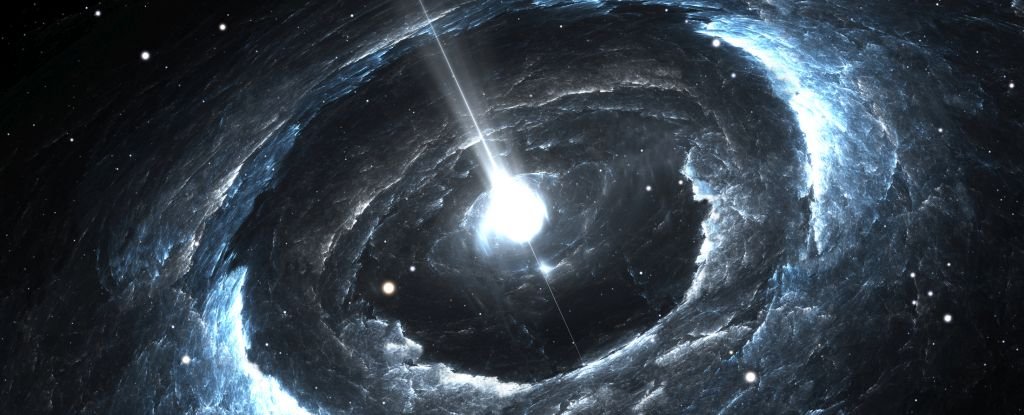Astronomers have been puzzled by fast radio bursts since they were first discovered in 2007. These intense, milliseconds-long flashes of radio energy from outer space emit as much energy in their brief lifespan as the Sun does in a few days. Most of these short-lived pulses originate outside the Milky Way galaxy, and we don’t know what produces most of them or how.
New research published in the journal Science describes a repeating fast radio burst that astronomers observed for over a year. This burst is surrounded by a strong but highly changeable magnetic field, suggesting that the source of the cosmic explosion may be a binary system made up of a neutron star whirling through winds of dense, magnetized plasma produced by a massive companion star or even a black hole.
The repeating burst, known as FRB 20190520B, was discovered in 2022 by astronomers at the Five-hundred-meter Aperture Spherical radio Telescope (FAST) in China. It is the rarest of all repeating fast radio bursts, producing radio bursts a few times an hour, sometimes at multiple radio frequencies, without ever resting.
Further investigation showed that FRB 20190520B resides in an extremely dense environment in a dwarf galaxy 3.9 billion light-years away. There are also materials surrounding the FRB source that produce strong, persistent radio emissions, leading to suggestions that the bursting source is a young neutron star in a complex environment.
Observations of FRB 20190520B using CSIRO’s Parkes radio telescope, Murriyang, in New South Wales, and the Green Bank Telescope in the United States showed that the burst produces strong signals at relatively high radio frequencies. These high-frequency signals turned out to be highly polarized, indicating that the electromagnetic waves are “waving” much more strongly in one direction than in others.
The direction of this polarization changes at different frequencies, suggesting that the environment around FRB 20190520B is highly magnetized. Moreover, the strength of the magnetic field appeared to vary over the 16 months of observation – and even flipped direction entirely twice.
Most theories to explain recent observations of repeating fast radio bursts involve binary systems made up of a neutron star and either another massive star or a black hole. While other hypotheses cannot be ruled out yet, the results of these observations favor the massive star scenario.
Our observations might provide crucial evidence to support the hypothesis that sources of repeating fast radio bursts have a massive companion capable of producing highly magnetized plasma. Future observations will reveal whether FRB 20190520B is truly in a binary system – or whether the Universe will surprise us once again.



Leave a Reply